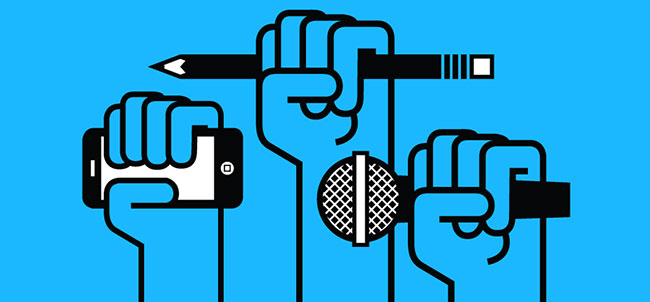
By Shashidhar Nanjundaiah
 Dean Thompson, US Acting Assistant Secretary of State for South and Central Asia, testified earlier this month before a Congressional panel hearing on democracy in the Indo-Pacific region. Thompson flagged the Narendra Modi government for imposing restrictions on freedom of speech and journalists and activists as “inconsistent with India’s democratic values” [emphasis added to indicate that Thompson did not try to draw equivalence with US values].
Dean Thompson, US Acting Assistant Secretary of State for South and Central Asia, testified earlier this month before a Congressional panel hearing on democracy in the Indo-Pacific region. Thompson flagged the Narendra Modi government for imposing restrictions on freedom of speech and journalists and activists as “inconsistent with India’s democratic values” [emphasis added to indicate that Thompson did not try to draw equivalence with US values].
Although the statement is a significant milestone, real change back to the way things were seems unlikely. Rather, a morphing towards what seems to be the new and still-emerging normal seems probable. Our media often prides itself as the fourth pillar of democracy, along with the legislative, the executive and the judiciary. But as the executive and the legislative are often accused of veering away from constitutionally inscribed democratic practices, should the media adapt to new normal or should it continue to fight the battle?
The media is often confronted with headwinds from our governments. Often, the media is the irritant in the larger scheme that a government lays out in political and ideological terms. Left to themselves, most sections of the media would steadfastly uphold democratic values as laid down in our Constitution, including the practices through which social equity and equality have been protected. To a media platform that seeks to remain loyal to the Constitution, majoritarianism should be a value to be bracketed, called out, and rejected. In that thinking, freedom of speech should be sacred, and aberrations should be flagged, criticised, raised hell out of. These practices are elements in a larger political ideology that is clearly at variance with the one we grew up on.
Practice before Paradigm (Shift)
Typically, the more controversial elements in such a scheme are rolled out in practice first, preceding the legitimacy of the constitution. Blatant violence both in action and in political rhetoric against Muslims preceded the CAA, mostly under pretexts-allegations of “smuggling” beef, inconveniencing public movement because of protests, disproportionately adding to the nation’s population. Pretexts are excuses but come in handy in creating compliance with the larger goal. Practices that are authoritarian and threaten promised freedoms must therefore be carefully packaged in sweetened chewables.
One of the biggest successes of our current politics in that nudge is a massive and successful campaign for binaries: nationalism and anti-national, freedoms and security threats, the showcases and the walled-out. But these binaries are different from those that we would use in academic research, for example. These are value-laden binaries. They clearly tell the desirable from the undesirable. Who would like to be an anti-national, a security threat, or an embarrassing aberration that cannot be showcased to the world? If you are a critic, you could be either anti-national or a security threat. If you are a researcher, the government seeks to monitor the research to ensure you are not endangering the nation. If you are poor, you should ideally have a wall before you so that global audiences can’t see you.
Paradigm shift comes about either through overwhelming groundswell or by top-down imposition, and the direction we are headed in cannot be achieved merely by the groundswell of ideologues.
Compliant public sphere?
How compliant has the media been in this process? Are we seeing enough media indignation in practice? Why does commentator after angry critic (and some journalists themselves) call large sections of the media lapdogs, or godi media? When a conventional set of constitutional values is at variance and even sometimes at loggerheads with the social and political practice, we expect the media to stand for the former.
In reality, the media has largely provided a delightful public sphere for debate, and that public sphere is particularly important in an environment as vulnerable to change as it is currently. Speak to mainstream editors who love their job, and they will deny that an unseen political hand is armtwisting and scripting what goes on air or in print. The ones who break away from mainstream behemoths to form small but significant news portals might vociferously agree. I suspect that the new IT regulations that govern news portals could change that feistiness among some of those, to mix my metaphors, find themselves on a tricky wicket as the net closes in on them. So pliability may at least in part be an act in commercial interest, to avoid police nuisance, or of legitimate and stated editorial slant. But denial of pliability shows how deep the problem is.
Would things be different we had laws specifically protecting journalists and our media? Currently, the Article 19 of the Constitution is overarching but also general in its application to the entire population without any special provisions for the media. Sweden and several other European countries protect the media through special provisions. Sweden’s Freedom of the Press was a pioneering piece of legislation that sought to protect information and thereby those who disseminate it. Significantly, the Swedish law was first enforced when the country was a monarchy-in 1766. Most of its provisions remain intact even after repeated changes and reversals to it until 1949. Foreign media, too, has pretty much unrestricted access to beam their content into Swedish homes.
The recent Himachal court verdict that unshackled veteran journalist Vinod Dua has bolstered journalists’ freedoms in general. The reason public mouthpieces like Dua need special protection is not only because courts will vary in thinking and ideological influences in their interpretations, and uncertainty will prevail. It is because they provide platforms for debates. It is exactly in these times of ideological paradigm shifts that such public spheres are needed the most.
Representative, not stray
A second reason is that by picking out individual journalists, the government essentially portrays criticism as some stray individual voice—that anti-national that could be a security threat and must be walled in. Before we get swayed by the ideological strength in that action, we must remember that the media both informs and represents. A gag on an individual, however cleverly bracketed as a stray voice, represents a section of the society.
Yet, this is not about the shift that the world is experiencing from a liberal democratic world to an increasingly authoritarian, autocratic, and top-down ideology. The practice precedes that shift—like the reconnoitring tentacles of an approaching octopus, so to speak. And thirdly, the media is the most vocal among all citizens. Expression is their whole job, both representing and informing the public.
Undeniably, there exists some cautious scepticism about possible price to pay for any special provisions for the media. Yet, providing special protection to expression by public disseminators of information, insight and creative expression could see a major change in content, production, and commerce. That is exactly the problem for a government that is underway creating a paradigm shift in ideology. Understanding this distinction is an important lesson in media literacy.
Shashidhar Nanjundaiah has headed private schools of journalism and media in India. Currently in an independent capacity, Prof Nanjundaiah feels the need for better news literacy especially among younger audiences. He writes frequently on MxMIndia. His views here are personal.